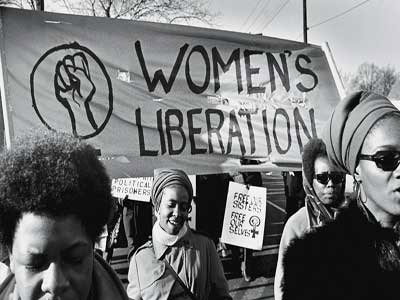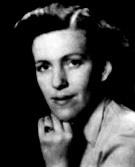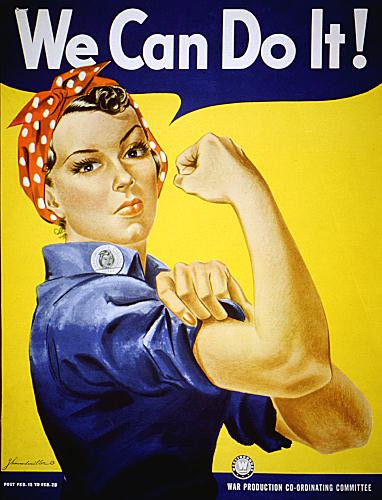 Women’s Liberation Struggle in Western Society
Women’s Liberation Struggle in Western Society
by Ac. Krtashivananda Avt.
Feminism in western society, was born in the background of Renaissance. When in society a suppressed feeling tries to express itself to release its suffering, it finds its vitality with an uncontrolled momentum. A revolution in the inner sphere of society takes place. Naturally it has its childhood, adolescence, maturity etc. In early phase it started with the symbolic protest to break the institutions, to deny everything that is imposed by man, in their fantasy they created a world of their own – isolated and without a direction. They emphasised a ‘masculine model of feminine’. This form of feminism was more criticised than it was welcomed.
 Today’s feminist brand those as ‘early feminism’. In next phase the effort was to design a ‘complementary feminine form’. The idea was if women can fulfil the complementary role of man then she will regain her lost dignity. But this concept was also ultimately discarded. Then came the third form and that they termed as ‘true feminism’. It means our feminine world is different because our aspirations, emotions, feelings are different. They realised that the feminine virtues can be developed and come to dominate or unknown and yet to be discovered can emerge. But it was realised that the genuinely feminine is either unknowable or yet unknown, to be brought into existence.
Today’s feminist brand those as ‘early feminism’. In next phase the effort was to design a ‘complementary feminine form’. The idea was if women can fulfil the complementary role of man then she will regain her lost dignity. But this concept was also ultimately discarded. Then came the third form and that they termed as ‘true feminism’. It means our feminine world is different because our aspirations, emotions, feelings are different. They realised that the feminine virtues can be developed and come to dominate or unknown and yet to be discovered can emerge. But it was realised that the genuinely feminine is either unknowable or yet unknown, to be brought into existence.
Then came the present phase, the era of eco-feminism. The struggle to reach this is phase is a continuous, long tiresome struggle. Emergence of any social value does not depend on an individual or group, but as a result of universal flow of evolution of social psychology. In this phase the struggle for material abandonment and that of artificial status-quo was considered as secondary than the restoration of dignity. In this phase of social transformation eco-feminism found its expression.
What is ecofeminism?
Generally we find four main aspect in ecofeminism:
 Firstly on a very basic level, ecofeminists are unified in the exploration of the commonalities between gender oppression and environmental degradation mainly caused by male Western dominance.
Firstly on a very basic level, ecofeminists are unified in the exploration of the commonalities between gender oppression and environmental degradation mainly caused by male Western dominance.
Women, Environment and Development (WED), which was also known as ecofeminism, particularly scrutinized the correlation between the oppression of women and the oppression of the environment. WED, sometimes referred to as GED (Gender, Environment and Development), is still struggling for acceptance and a wider audience, though it has been in existence for a number of decades and solidified as a theory in the 1980’s.
The second, states that men are more related to culture and that women are related to environment. Culture has been seen as superior to the untamed’ environment and hence both women and the environment have been subjugated by men, which is seen as dominant over an ‘untamed’ environment. Women are related to the environment. Thus, women and the environment share a common inferior position.
Thirdly, oppression of women and the oppression of nature have occurred simultaneously and thus women have a responsibility to nutralise male domination over both.
Fourthly, ecofeminism seeks to combine feminism and ecological thought, as they both work towards egalitarian, non-hierarchical structures.
It is important to note that feminists formulated the theory of ecofeminism at a time when the green movement was popular, so although ecological ethics are of primary concern, ecofeminists are feminists first . The spectrum of ideas encompassed within this paradigm vary from rigid academic endeavours to proposing an innate female spiritual nurturing power over nature. The latter has been heavily criticised by some as anti-intellectual and overly intuitive.
Ecofeminists stress that certain ecologically damaging issues have more of a detrimental effect on women than on men, particularly as women tend to be more involved in family provisions and household management. Such problems include sustainable food development, deforestation, desertification, access to safe water, flooding, climate change, access to fertile land, pollution, toxic waste disposal, responsible environmental management with in companies and factories, land management issues, non-renewable energy resources, irresponsible mining and tree felling practices, loss of biodiversity (fuel, medicines, food). As household managers, women are the first to suffer when access to sustainable livelihoods are unbalanced.
When the water becomes scarce, the food stores dry up, the trees disappear, the land becomes untenable and the climate changes, women are often the ones who need to walk further and work harder to ensure their families survival. It has been found that in times of economic crisis, it is the women who shoulder the burden and they are the first to go without provisions such as food, medicine and education .
The term Ecofeminism was coined in France in 1974 by Francois d’Eaubonne in her book Le Feminisme ou la Mort. However the term did not appear in America until 1980, with Ynestra King’s The Eco-feminist Imperative. The concept was, however, appearing throughout the 1970’s with authors like Rosemary Radford-Ruether’s New Woman, New Earth- Sexist Ideologies and Human Liberation (1975),
Susan Griffin’s Women and Nature – The Roaring Inside Her (1978) and Carolyn Merchant’s The Death of Nature – Women, Ecology and the Scientific Revolution (1980) and Mary Daly’s Gyn/Ecology (1979).
Eco-feminists demarcated the world into two spheres—the rational or masculine sphere and the sphere of nature or femininity. They realised that not only women are subjugated by man but the masculine sphere has a dominant role over feminine sphere. That’s why the struggle for liberation should be directed towards the domination of the whole feminine sphere – environment, unprivileged class, weaker section of the society etc. in other words they challenged the institutions of power that dominates.
Eco-feminist reject the masculine model especially in the area of relations to nature and argue more directly that this masculinising attitude leads women to join men in belonging to a privileged class in turn defined by excluding the unprivileged class, silent nature, that is the strategy is to include women into a new dominating class, without caring the structure of or the attitude of domination.
Before feminist used to react with the label of being ‘close to nature’. The eco-feminist not only accepted it proudly but went further and declared that not only ‘close to nature’ we are nature. They declared that the primacy of female, (i.e. feminine character traits, not necessarily biological femaleness), would be acknowledged as primary, the source of all life force. But they could not define the concept and tried to define as Genuinely Feminine.
The project of the discovery and emergence of the genuinely feminine, is conceptualised not as something whose character has been formed by the exclusion of the masculine sphere, but as an independent force, silenced and unable to reach expression under patriarchy, but ready to and able to emerge once the barriers of phallo-centric society to its expression are removed. Women’s bodily experience is taken as the starting point in the attempt to give expression to the silenced and unknown feminine.
It is not enough to challenge nature/culture dualism, and the dominant masculine model of human culture. As long as self is separated from the natural world as in liberalism and as long as the dialectical contradiction remains, any model however lofty it is, is difficult to realise. Ultimately we have to find the answer in spirituality. We have to realise that difference remains in physical and psychic sphere but not in the sphere of soul. Deepest human feeling must find its inspiration from the soul and not from biological urge and intellectual or emotional domain.
As mentioned earlier women’s struggle for liberation found momentum during the Renaissance in the West. Three trends influenced it. First one, is the idea of liberalism, which took the form individualism; secondly, the Freudian school of thought which revolted against Victorian morality and embraced the idea of sexual revolution. Thirdly, in the sixties the youth revolt against all forms of authorities i.e. religious injunctions, state, teachers and guardians. This destabilised the harmonious relation in many families and ultimately created a social antagonism, which, however with the emergence of eco-feminism transformed into a more positive direction.
Human being is yet to search her/his inner light as Virginia Wolf could claim, ‘ Life is not a series of gig lamps symmetrically arranged, but a luminous halo’.



